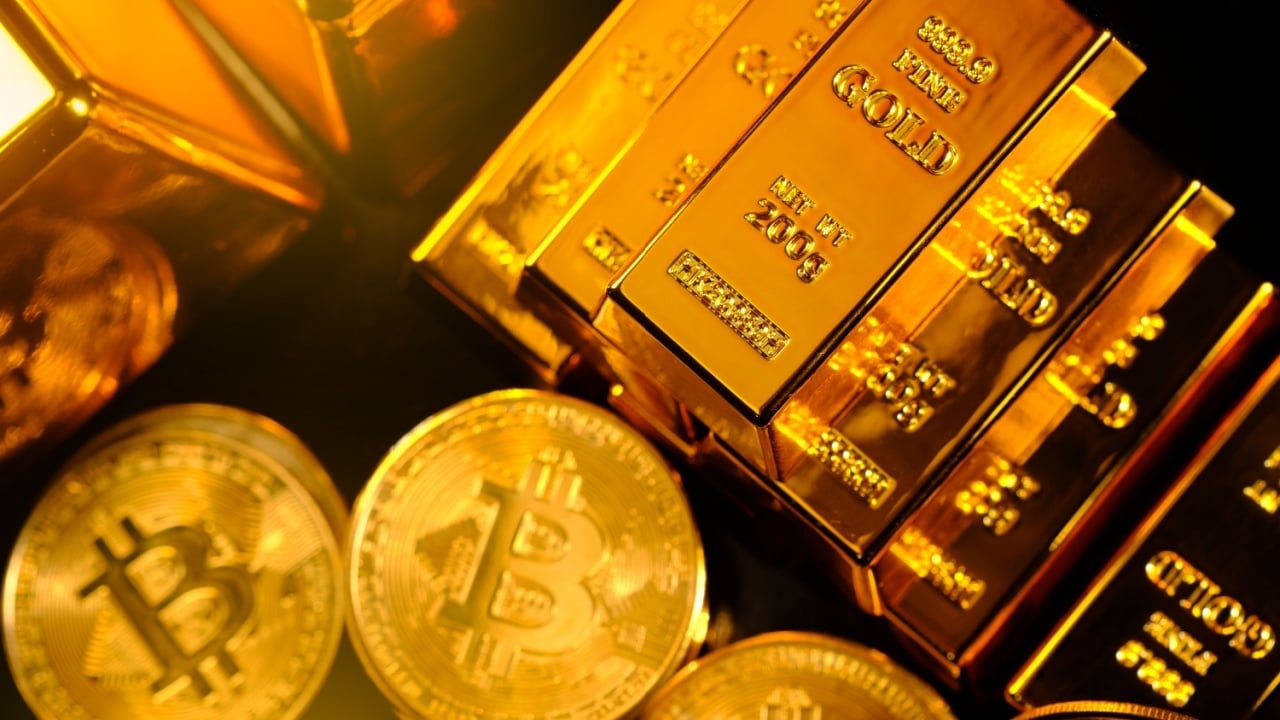Shifting Economic Tides: A New Era for Gold and Bitcoin
In recent times, there have been intriguing suggestions from financial experts, such as Hayes, that countries might reconsider their reliance on U.S. treasuries and stocks in favor of more “neutral” hedges like gold and bitcoin. This notion stems from the belief that we are entering a new phase in international trade relations, one that harks back to the pre-1971 era when currencies were directly linked to gold.
A Look Back: The Gold Standard and Its Disappearance
Before the 1970s, most countries adhered to the gold standard, which meant their currencies were directly exchangeable for a fixed quantity of gold. This system provided a degree of stability in international trade and finance. However, it was eventually abandoned due to various reasons, including the need for greater monetary flexibility and the inability to maintain the fixed exchange rates amidst rapid economic growth and inflation.
The Rise of Fiat Currencies and Their Challenges
Since the demise of the gold standard, we have lived in an era of fiat currencies, where their value is based on the faith and credit of the issuing government. While this system has allowed for greater economic flexibility, it has also introduced new challenges. Central banks have had to grapple with maintaining price stability, managing inflation, and dealing with currency fluctuations. Moreover, the dominance of the U.S. dollar as the world’s reserve currency has given it a unique position in global finance.
The Case for Gold and Bitcoin as Hedges
Against this backdrop, some observers argue that countries may seek to diversify their reserves away from U.S. dollars and towards alternative assets like gold and bitcoin. Gold, as a traditional safe-haven asset, has long been used as a hedge against inflation and economic uncertainty. Bitcoin, on the other hand, offers a digital alternative that is decentralized, limited in supply, and offers anonymity and security.
Impact on Individuals: Preserving Wealth and Hedging against Inflation
For individuals, this trend could mean that investing in gold and bitcoin may become increasingly attractive as a means of preserving wealth and hedging against inflation. Gold, with its long-standing reputation as a store of value, has historically performed well during times of economic instability. Bitcoin, despite its volatility, offers a digital alternative that is not subject to the same physical constraints as gold.
- Gold: Historically, gold has been used as a hedge against inflation and economic uncertainty. It is a tangible asset that can be easily bought and sold, making it a popular choice for individuals looking to diversify their portfolios.
- Bitcoin: As a digital asset, bitcoin offers unique benefits such as decentralization, limited supply, and anonymity. It has the potential to act as a hedge against inflation and economic instability, much like gold, but with the added convenience and flexibility of being a digital asset.
Impact on the World: Geopolitical Shifts and Monetary Policy
On a larger scale, this shift towards gold and bitcoin as hedges could have significant geopolitical implications. For instance, it could lead to a reduction in the dominance of the U.S. dollar in international trade and finance. This, in turn, could impact monetary policy decisions made by central banks and governments. Furthermore, it could lead to increased cooperation between countries in managing their reserves and addressing economic instability.
Conclusion: Embracing Change and Adapting to New Realities
In conclusion, the suggestion that countries might shift towards gold and bitcoin as hedges in response to changing economic realities is an intriguing one. It represents an acknowledgement that the world is entering a new era in international trade and finance, one that demands greater flexibility, adaptability, and innovation. While it remains to be seen how this trend will unfold, it is clear that individuals and institutions would do well to consider the potential benefits of investing in these alternative assets as a means of preserving wealth and hedging against inflation.





